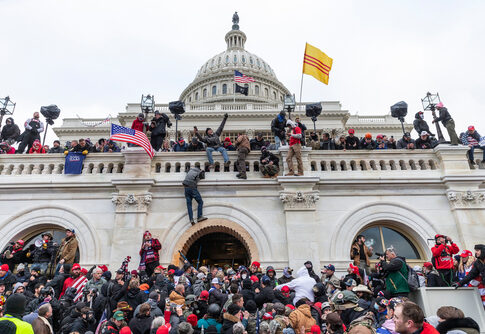John Nassif, convicted for his role in the January 6 Capitol riot, sought clarity from the Supreme Court on the balance between protest rights and legal constraints. Nassif argues the law violated freedom of speech. Was Nassif prison sentenced justified?
Nassif’s Legal Challenge
The Supreme Court decided not to hear the appeal of John Nassif, a Florida resident, involved in the January 6 Capitol riot. Nassif challenged the statute prohibiting “parading, picketing, and demonstrating” on Capitol grounds, which he argued contravened his First Amendment rights. The law, according to Nassif, unfairly restricts free expression, a claim that gets more complex considering the venue’s non-public forum status.
Lower courts, including the U.S. Court of Appeals for the D.C. Circuit, dismissed the claim, citing the Capitol as a nonpublic forum. This designation permits broader limitations compared to public spaces. U.S. District Judge John Bates upheld Nassif’s charge, emphasizing the need for order and security within Capitol boundaries, demonstrating a consistent judicial approach in these matters.
BREAKING: The Supreme Court rules for Jan. 6 rioter challenging obstruction charge, limiting obstruction charges in the Jan. 6 case. It’s a charge Donald Trump also faces in his election interference case. pic.twitter.com/AcCn5R9aui
— MSNBC (@MSNBC) June 28, 2024
Implications of the Ruling
Nassif’s conviction includes seven months of incarceration due to misdemeanors like disorderly conduct and violent entry. The refusal of the Supreme Court to review his case retains previous court decisions. This impacts over 460 other individuals facing similar charges post-January 6. The ruling underscores significant enforceability when it comes to maintaining discipline within such critical governmental locations.
This is particularly notable given past rulings such as United States v. Fischer, where the Supreme Court narrowed the definition of obstructive actions during the Capitol disturbances. Each decision contributes uniquely to the broader dialogue about permissible public action and the role of legal boundaries.
J6: A True Timeline
The True Timeline of January 6th is Here!
WATCH FREE: New Years Day 2024https://t.co/ckgggLlQ6a #J6TrueTimeline pic.twitter.com/3ranMpX7fL— InvestigateJ6 (@InvestigateJ6) January 1, 2024
Future Considerations and Trump’s Position
The unresolved complexities surrounding First Amendment interpretations at key national landmarks remain a pressing legal subject. In the political arena, former President Donald Trump has hinted at potential pardons for those involved in the January 6 incidents. He expressed a consideration to pardon many individuals indicted for riot-related offenses.
This implies that legal interpretations and executive powers will continue to interplay as these cases develop. As the consequences of January 6 continue unfolding, the established judicial and potential executive actions will play essential roles in forming future policies concerning civic engagement and federal property protection.


